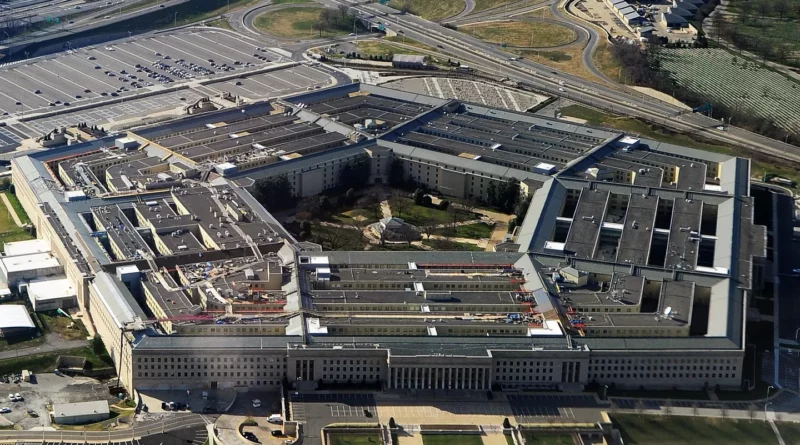Why US National Defense Industrial Strategy May Prove Ineffective?
Source : sputnikglobe.com – January 19, 2024 – Oleg Burunov
Abonnez-vous au canal Telegram Strategika pour ne rien rater de notre actualité
Pour nous soutenir commandez les livres Strategika : “Globalisme et dépopulation” , « La guerre des USA contre l’Europe » et « Société ouverte contre Eurasie »
The new strategy unveiled by the Pentagon not long ago is unlikely to work properly, David T. Pyne, an EMP Task Force scholar and former US Department of Defense officer, told Sputnik.
The US Department of Defense (DoD) recently released its first-ever National Defense Industrial Strategy (NDIS), concerning the Pentagon’s engagement, policy development, and investment in the industrial base over the next five years.
NDIS’ Goal
According to senior Pentagon officials, the 59-page document aims to help the government create a modern and resilient defense industry « to deter US adversaries and meet the production demands posed by pressing challenges. »
« We are implementing the NDIS now to ensure that our defense industrial base continues to both strengthen our national security here at home while reassuring and supporting allies and partners, » Laura D. Taylor-Kale, assistant secretary of defense for industrial base policy, pointed out.
Key Areas for Defense Industrial Cooperation
The NDIS underlines at least four key areas critical to building an advanced defense industry, which include resilient supply chains, workforce readiness, flexible acquisition and economic deterrence.
According to the document, several actions are needed to achieve resilient supply chains, including establishing public-private partnerships, risk-sharing mechanisms and technology.

Weak US Workforce Risks Defense Industry’s Ability to Supply Arms to Allies – Reports
Admitting Gaps and Shortfalls
The NDIS acknowledges there are troubles in the US’ domestic manufacturing capability. The document “provides a path that builds on recent progress while remedying remaining gaps and potential shortfalls.”
The US defense industry, the report reads, faces a string of challenges, including an inadequate workforce, an overreliance on foreign sources for key materials, underutilization of advanced technology, unfair trade practices, instability in procurement, and constraints on defense funding on Capitol Hill, among other issues.
The NDIS states that an incapacity to strengthen the country’s industrial base could cause serious problems for its military capabilities.
“The strategy describes the problem, not the solution,” Elaine McCusker, a senior fellow at the American Enterprise Institute think tank, was quoted by the Defense News website as saying.
« As with most such strategies, this one falls short in providing the unafraid look at root causes and specific actions needed for rapid, measurable and sustainable improvement [regarding the US industrial base], » McCusker said.
NDIS Coming Too Late, Expert Says
David T. Pyne, an EMP Task Force scholar and former US Department of Defense officer, has meanwhile told Sputnik that « the Biden administration’s National Defense Industrial Strategy is long overdue. »
He stressed that the conflict in Ukraine « has exposed some critical deficiencies not only in the US weapons stockpile of precision-guided munitions and artillery shells but also in America’s defense industrial base’s ability to produce them at a sufficient rate to supply the US military, let alone its allies, during a major conflict. »
Pyne recalled recent US war games, which he said showed that Washington would run out of long-range precision-guided munitions in a high-intensity conflict in less than a week. In addition, the expert went on, the US is desperately trying « to keep pace with Ukraine’s needs for 155mm artillery shells and is working to ramp up production to a higher level. »

US Unable to Fight ‘One-Front War’ After Ukraine Supplies Deplete Weapon Stocks
« Even so, at current rates, it will take several years for the US to restore its depleted weapon stocks for 155 mm artillery shells, Stinger man-portable air defense systems and a number of other weapon systems provided to Ukraine in [US President Joe] Biden’s proxy war against Russia, » according to the expert.
He insisted that the NDIS « is going to take years to implement, and that, in his opinion, the strategy is “insufficient for America’s defense needs. » Pyne said he has some doubts about how effective this new strategy will prove to be, given Biden’s « continued weakening of US military power. »
The former Pentagon officer urged the DoD to focus on strategic and homeland defense rather than « conventional military power projection. »
He underscored that the revision of America’s missile defense potential cannot be implemented without withdrawing US troops from Eastern Europe and the Middle East.





Ping :Why US National Defense Industrial Strategy May Prove Ineffective? | Raimanet